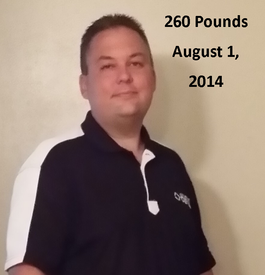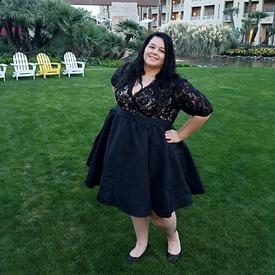weighing food to determine serving size

dodger7977
Posts: 108 Member
I am sure this question has been asked before, but I am going to ask it anyway incase it has not.
If you are weighing food to determine what a serving size is, should you weigh it raw or cooked? As an example, say I am baking chicken for dinner and want to know how many servings I am baking, should I weigh it raw or after it is cooked?
I don't know if it makes a big difference, but I was wondering what experienced folks would have to say. Thanks!
If you are weighing food to determine what a serving size is, should you weigh it raw or cooked? As an example, say I am baking chicken for dinner and want to know how many servings I am baking, should I weigh it raw or after it is cooked?
I don't know if it makes a big difference, but I was wondering what experienced folks would have to say. Thanks!
0
Replies
-
I always weigh after cooking since that's what I'm actually going to be eating, not all the stuff that cooks off. Don't know if this is right or not it's just what I do because it makes sense to me :happy:0
-
Most food is labeled to be weighed raw.
4 oz of raw chicken cooks down to approximately 3 oz of cooked chicken. 0
0 -
I have this problem with frozen, thawed, or cooked food? Like chicken fillet? x0
-
I usually find that it is most accurate to weigh everything (pasta, veggies, meat, rice, etc...) raw! However, it also depends how you are recording it.
If you are using the nutrition facts off of the package, weight it raw.
If you are choosing chicken as an already-listed item, them be sure to read it (they often say roasted, boiled, grilled, etc...)
Weight 1 single piece of chicken raw, then weight it after it's been cooked - big difference...0 -
I usually do it cooked unless the packaging states otherwise. For chicken I would look it up in the data base as cooked chicken, or veggies as steamed veggies, and then weigh accordingly.0
-
I'd say after. Especially with pasta, rice, or other foods like vegetables that can absorb water, I would weight after (when it weighs more) to be more conservative with the calories. That is, unless the database tells you that it's X grams uncooked. But I'd play it safe and measure afterwards. With chicken, though, it shouldn't matter, especially if you're baking it or something. That wouldn't change the mass anyway!0
-
Most will say before as that is how the package described it 3oz is usually means uncooked ounces.. but I weight mine after0
-
I go by whatever the food database, it should tell you if the food is raw or cooked. Otherwise, I always weigh raw, once cooked it will be lighter!0
-
I weigh it cooked just because it is easier, I have been told its wrong but don't care its working. I usually have a surplus of calories because I don't eat my exercise calories (another controversy here) Get ready for both answers. The reason I do it this way is ease, also if you cook all the fat out well done or medium it is obviously different. Ground turkey has cooks down so much its not even funny ect.0
-
Raw, uncooked.0
-
Look at the description of the food you've picked from the database, in most cases it will be obvious - eg "Chicken breast, roasted, skin removed"
If it's not, look at packaging to see whether the MFP values make sense. You'll soon get a sense of what is "Too Good To Be True", for instance all types of dried pasta are around 350 calories for 100g - if MFP quotes 100g of pasta at more like 150 calories, you know it's the cooked weight.0 -
It depends.....when making hamburgers I weigh them as I am making the patty (so raw) because it also helps me to determine how big to make them.
But for chicken or steak, I weigh them cooked because it is easier. I know they should be weighed raw I believe, but I don't want to worry about getting raw chicken on more surfaces, and then trying to remember which one is mine once it's cooked. I figure the difference is slight, and I don't want to become THAT obsessive about my calories. I think it's important to be accurate, but being too particular is bad I think. For everything that I overestimate, I probably underestimate other stuff.
Besides, how would anyone eat leftovers if you always have to weigh it before hand? Chicken breasts often vary in size, so even if you weighed them raw, how would you keep track of which one weighs what to eat later?0 -
Glad you ask the question because I honestly don't know either. I have been weighing before cooking for meat, pasta, ect. If I get something out of the food data base, I try to find the one that specifies raw or cooked. Having said this, the folks weighing after it is cooked have lost a lot more weight than me so maybe I am doing it wrong!0
-
Most products are labeled with their information as they are packaged. Some will actually have two sections one for as packaged and one for prepared. I always measure my meat (I can't help but giggle here) when it is raw.
I'd also like to point out that you should look carefully at the labels. I find a lot of stuff will have two measurements. For example the turkey sausage we like says a serving size is 1 link. HOWEVER, it has grams in parentheses. If you weigh each link in the package they all weigh different grams and almost always they are more than the serving size. So just be aware of this. I know this was an eye opener when we realized it and made a HUGE difference in our weight loss once we corrected it!0 -
raw0
-
Always, always raw with meats. I worked in a specialty food store that had a kitchen and all weights and measurements are done raw.
This is because when you cook something there is no consistency to how much it will weigh when it's cooked. If I give 4oz of raw chicken breast to two different people and let them cook it, person A's cooked chicken might weigh 3.5 oz while person B's weighs 3.25 oz. but both of the cooked amounts have 120 calories in it.
This happens for various reasons, the main one being amount of time cooked. The longer something is cooked the more moisture it loses (hence why overlooked meat is dry). So person B's chicken has .25 oz less water in it now than person A's, and that's all that's different.
It's why when you see ads on TV or listings on menus for "quarter-pound" burgers or a 12 oz steak, there's typically an asterisk with fine print at the bottom that says "pre-cooked weight"0 -
I always weigh it Raw unless the package says "cooked" on it. If you take a bag of frozen veggies, steam them, then weigh it, you'll only end up with about half the servings the bag says it has. Same with meats, usually the calories on the package are for what it weighs Raw.0
-
Thanks for asking the question. I just started weighing my food and was looking up what other people have written about the same topic and came by yours.0
This discussion has been closed.
Categories
- All Categories
- 1.4M Health, Wellness and Goals
- 398.3K Introduce Yourself
- 44.7K Getting Started
- 261K Health and Weight Loss
- 176.4K Food and Nutrition
- 47.7K Recipes
- 233K Fitness and Exercise
- 462 Sleep, Mindfulness and Overall Wellness
- 6.5K Goal: Maintaining Weight
- 8.7K Goal: Gaining Weight and Body Building
- 153.5K Motivation and Support
- 8.4K Challenges
- 1.4K Debate Club
- 96.5K Chit-Chat
- 2.6K Fun and Games
- 4.7K MyFitnessPal Information
- 17 News and Announcements
- 21 MyFitnessPal Academy
- 1.5K Feature Suggestions and Ideas
- 3.2K MyFitnessPal Tech Support Questions














